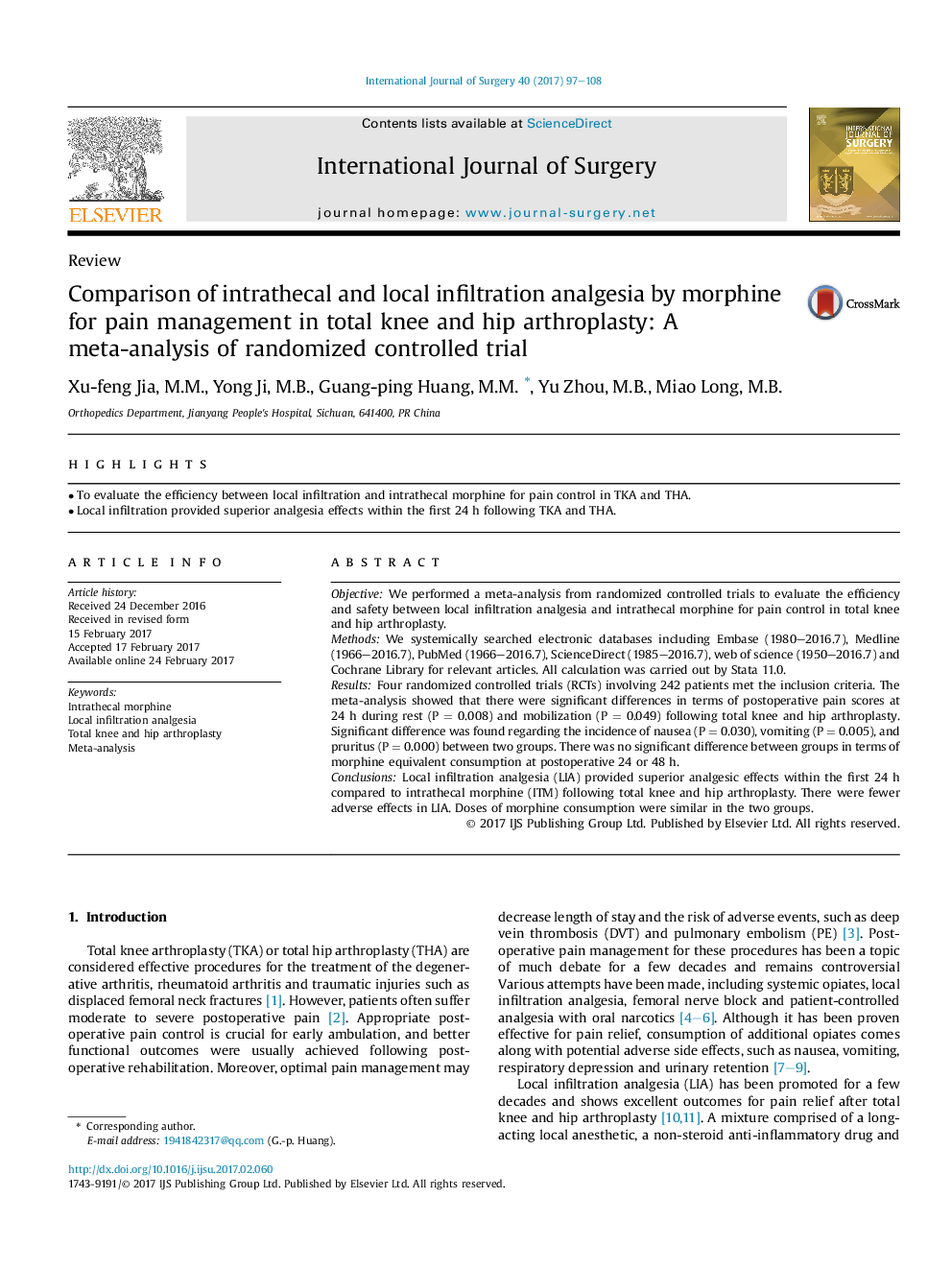| Article ID | Journal | Published Year | Pages | File Type |
|---|---|---|---|---|
| 5732269 | International Journal of Surgery | 2017 | 12 Pages |
â¢To evaluate the efficiency between local infiltration and intrathecal morphine for pain control in TKA and THA.â¢Local infiltration provided superior analgesia effects within the first 24 h following TKA and THA.
ObjectiveWe performed a meta-analysis from randomized controlled trials to evaluate the efficiency and safety between local infiltration analgesia and intrathecal morphine for pain control in total knee and hip arthroplasty.MethodsWe systemically searched electronic databases including Embase (1980-2016.7), Medline (1966-2016.7), PubMed (1966-2016.7), ScienceDirect (1985-2016.7), web of science (1950-2016.7) and Cochrane Library for relevant articles. All calculation was carried out by Stata 11.0.ResultsFour randomized controlled trials (RCTs) involving 242 patients met the inclusion criteria. The meta-analysis showed that there were significant differences in terms of postoperative pain scores at 24Â h during rest (PÂ =Â 0.008) and mobilization (PÂ =Â 0.049) following total knee and hip arthroplasty. Significant difference was found regarding the incidence of nausea (PÂ =Â 0.030), vomiting (PÂ =Â 0.005), and pruritus (PÂ =Â 0.000) between two groups. There was no significant difference between groups in terms of morphine equivalent consumption at postoperative 24 or 48Â h.ConclusionsLocal infiltration analgesia (LIA) provided superior analgesic effects within the first 24Â h compared to intrathecal morphine (ITM) following total knee and hip arthroplasty. There were fewer adverse effects in LIA. Doses of morphine consumption were similar in the two groups.
